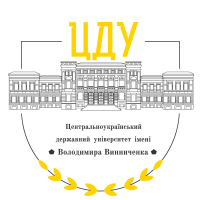SPECIFICS OF TROPE TRANSLATION IN SCIENCE FICTION: CASE STUDY OF THE UKRAINIAN TRANSLATION OF DAN SIMMONS’ HYPERION
DOI:
https://doi.org/10.32782/2522-4077-2024-208-58Keywords:
trope, metaphor, comparison, epithet, hyperbole, metonymy, alliteration, fiction translation, science fiction, Hyperion, transformations in translationAbstract
The research paper considers the specifics of translating tropes (such as metaphor, comparison, epithet, hyperbole, metonymy, etc.) and includes a case study of Hyperion, a science fiction novel by Dan Simmons, translated into Ukrainian by Bohdan Statsiuk. The actual material of the research consisted of 300 examples of tropes used by the author in the original, as well as 300 examples of the same tropes in Ukrainian translation. The material was selected using the continuous sampling method and analyzed with the help of the statistic method. The article regards the concept of the trope, its differences from the notion of stylistic figure, as well as types of different tropes, such as metaphor, comparison, epithet, hyperbole, metonymy etc. The research paper analyzes the ways of translation and transformations used by the translator with the purpose of rendering the imagery and the poetic component of the original into Ukrainian in the most successful way. It has been established that the most frequently used transformations in the translation of Hyperion were lexical transformations, namely concretization, generalization and modulation, which was conditioned by the necessity of adequate rendering of the lexical element of the tropes, which constitutes the basis of their emotive and poetical function. Grammatical transformations in the Ukrainian translation of Hyperion are mostly predetermined by the differences in the morphological and syntactic layout of the source and target languages. It has been also noticed that in rendering tropes into Ukrainan, the translator is prone to using compensation to preserve some formal poetic figures, such as alliteration. The research has confirmed that translation of tropes requires considerable transformations to be engaged by the translator with the purpose of creating an adequate parallel text and leading it closer to equivalency, which often results in total reorganization of sentences or phrases.
References
Бабелюк О. А. Стилістичні засоби і прийоми крізь призму лінгвосинергетики [Електронний ресурс]. Режим доступу: http://www.knlu.kyiv.ua/research/216-issues/274-visnyk-knlu-seriia-filolohiia.
Буда В. А. Порівняння як традиційний засіб художньої конкретизації. Лінгвостилістика сучасного історичного роману про добу козацтва (60-90 рр. ХХ ст.). К. : Рідна мова, 1998. С. 91–97.
Глінка Н. В. Експресивні засоби й стилістичні прийоми вираження експресивності та особливості їх перекладу [Електронний ресурс]. Режим доступу: http://journal.fl.kpi.ua/ru/n-v-glinka-yu-zajchenko.
Качуровський І. В. Основи аналізу мовних форм: (Стилістика). Ч. 2: Фігури і тропи. МюнхенКиїв, 1995. 236 с.
Ковалів Ю. І. Літературознавча енциклопедія: у 2 т. К.: ВЦ «Академія», 2007. Т. 2. 624 с.
Літературознавчий словник-довідник. К.: ВЦ «Академія», 1997. 752 с.
Марченкова І. Ю. Іронія як культурна проблема перекладу. Особливості відтворення іронії на прикладі оповідання Курта Тухольського «Берлін! Берлін!» [Електронний ресурс]. Режим доступу: http://molodyvcheny.in.ua/files/journal/2015/2/329.pdf.
Мацько Л. І., Мацько О.І. Риторика: [навч. посіб.]. К.: Вища шк., 2006. 311 с.
Молчко О. Відтворення лінгвокультурних особливостей художнього порівняння з компонентом – флороназвою ( на матеріалі англійської та української мов). Іноземна філологія: український науковий збірник. Вип. 128. Львів : Видавничий центр ЛНУ імені Івана Франка, 2015. С. 82–87.
Павленко Н. О. Збереження поетичного потенціалу епітетів при перекладних трансформаціях [Електронний ресурс]. Режим доступу: http://eprints.zu.edu.ua/984/.
Палєй Т. А. Лексико-граматичні особливості перекладу англомовних епітетів. Вісник Житомирського державного університету імені Івана Франка. Філологічні науки. 2017. Вип. 2. С. 99–104.
Петровська Н. М. Особливості функціонування гіперболи і мейозису та їх переклад у текстах різних стилів. Нова філологія. 2012. № 52. С. 148–152.
Селіванова О. О. Сучасна лінгвістика: термінологічна енциклопедія. К.: Довкілля, 2006. 716 с.
Сіммонс Д. Гіперіон; пер. з англ. Б. Стасюка. Тернопіль: Навчальна книга, 2016. 608 с.
Таран А.А. Сучасна метафора як засіб мовної експресії. Вісник Черкаського університету. Серія «Філологічні науки». 2018. Вип. 2. С. 93–98.
Тараненко О. Іронія. Українська мова: енциклопедія. К.: «Українська енциклопедія», 2004. 824 с.
Українська мова: енциклопедія. К.: «Українська енциклопедія», 2004. 824 с.
Catford J. A linguistic theory of translation. L., N.Y. : Routledge, 2000.
Dijk T. A. van. Cognitive Processing of Literature Discourse. Poetics Today. 1979. Vol. 1. № 1–2. P. 151.
Dickins J. Tropes and translation. Imprint Routledge. 2017. 25 p.
Discourse analysis [Internet resource]. URL: http://en.wikipedia.org/wiki/ Discourse_analysis.
Fass D. Processing Metaphor and Metonymy. Stanford: CSLI, 1997. P. 32–70.
Simmons D. Hyperion. London : Headline Book Publ., 1991. 504 p.








